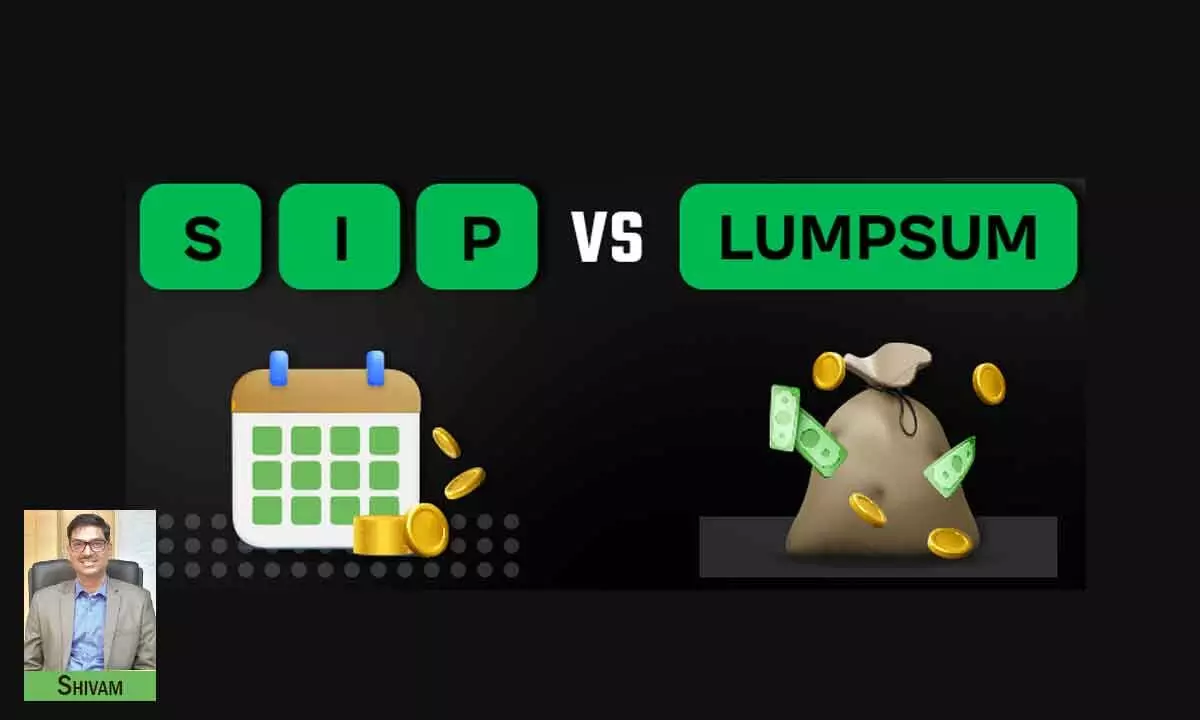The investment secret most advisors won't tell you
While some may label it misunderstood or overhyped, SIPs remain a powerful tool for wealth creation. However, treating them as an alternative to lumpsum investments, especially for large sums, can be detrimental
image for illustrative purpose

“SIP Ek Ausat Ki Vyavastha Hai, Labh Bhi Ausat Hi Dega
Nivesh Agar Labhdayak Hai, Ekmusht Hi Adhik Dega”
Translation: SIP is an arrangement for averaging the cost, so is it for return flow.
If investment is rewarding, lumpsum investment will certainly outgrow.
At the cost of being labelled an investor with little professional knowledge by a few, I must say that Systematic Investment Plan (SIP) is the most misunderstood and most hyped concept in the field of investment. SIP is a wonderful tool which allows people with regular income stream to create wealth in a disciplined manner, but problems arise when people perceive it as an alternative to lumpsum investment rather than a tool to invest based on one’s cash flow. This perception does more harm than good to the investors.
Let me explain. It happens many a times that we have a lumpsum amount to invest in the market, could be due to some arrears received or the sale of an asset. As an investor it is quite natural to be unsure whether it is the right time to invest in the market and worry about it going down in near future. Advised by an advisor or by themselves many people take a decision to keep the lumpsum amount in a liquid instrument and gradually enter the market using SIP, hoping that by this we are avoiding ‘timing’ the market and to benefit by rupee value averaging.
Unfortunately, by this very act we are implicitly hoping that the market will fall in the short term and go back up eventually. In trying to avoid timing we are hoping to time it. It’s a proven fact that time in the market matters more than timing the market. There are two major problems with investing a lumpsum amount systematically.
1. By not immediately investing, we have reduced the time for which we are invested thus reducing the overall gain.
2. We have a misconceived notion that SIP reduces risk without reducing return. But there is no exception to the rule of risk and return trade-off in the long run. We must keep in mind the golden rule of investing, i.e., high-risk, high-return, low-risk, low return and average-risk, average-return and investing through SIP falls under third category on this matrix.
Another key psychological factor to consider is the simplicity and decisiveness of one-time investment. Investing via SIPs requires a discipline which can be challenging for some people. It is quite natural for new expenses to pop-up if you have a large corpus sitting in your bank account.
The very concept of investment is rooted in the notion that the valuation of underlying asset will increase over the period irrespective of the short-term volatilities. This explains why the cost of investment will go on increasing with the passage of time. The investment is not worth if it is other way round.
To illustrate with some real data, let’s compare the returns for Mr. Hari who came into some money and wants to invest Rs 24 lakhs into Nifty-50 based index funds for 5 years. He can do it by one of two methods.
a. Directly investing in one-shot in an index fund
b. Systematically invest 1 lakh per month over 2 years.
If Mr. Hari had started investing on April 1, 2014, his portfolio on April 1, 2019 would have been worth Rs 33.6 lakhs if he had done a 2-year SIP where if he had invested directly the portfolio would be worth Rs 41.2 lakhs.
The above graph shows the gains from the market over a 5-year term if a net sum of Rs 24 lakh is invested as a lumpsum or in a systematic way over 2 years. For instance, the first point in the graph shows the returns if Rs 24 lakh are invested on February 1, 2014, and withdrawn on February 1, 2019. As we can see almost 80 per cent of the times lumpsum investments overshadow investing via a SIP. Though we have taken just 5-year (Assuming that an investor in equity schemes must be having a minimum time horizon of 5 years.) for the purpose for illustration, the gap and probability for outperformance by lumpsum investment will further increase if we increase the time beyond 5-year.
By no means it’s implied that SIP is not a good investment tool, but rather we must acknowledge the benefits it brings by virtue of enforcing financial discipline and commitment to our own future. It has helped innumerable people create wealth but as with any good tool it must be used for the right purpose at the right time.
(The writer is Senior Vice President, SBI Funds Management Limited)
(Translation & Synopsis by Alok, B-Tech, CFP, Sr Director of Engineering at Ceremorphic Technologies, Hyderabad)

